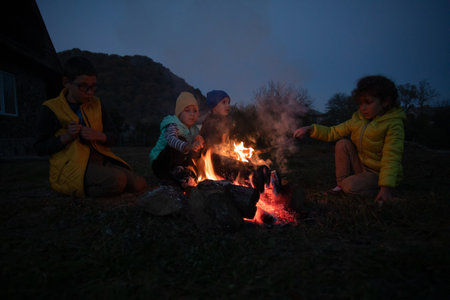1. Skipping a Test Run of Your Gear
Many first-time campers arrive at the campsite without trying out their gear beforehand. This is one of the most common rookie mistakes — and it can lead to major frustration or even safety issues. Imagine showing up after sunset, only to realize you don’t know how to pitch your tent or that your camp stove won’t light. Its not the kind of adventure you want.
Why Testing Your Gear Matters
Camping equipment might look simple on the shelf, but every piece has its quirks. From tents with complicated pole systems to air mattresses that require a specific type of pump, it’s easy to get overwhelmed in the wild if youre unfamiliar with your gear.
Common Issues First-Time Campers Face:
| Gear | Potential Problem |
|---|---|
| Tent | Missing parts or confusing setup instructions |
| Stove | Wrong fuel type or malfunctioning igniter |
| Sleeping Bag | Too cold for the actual weather conditions |
| Lanterns/Flashlights | Dead batteries or dim light output |
| Cooler | Poor insulation leading to spoiled food |
What You Should Do Instead
A few days before your trip, take time to set up your tent in your backyard or even your living room. Fire up your camp stove, check all your lights and power banks, and make sure everything works as expected. This small step can make a huge difference in how smoothly your camping trip goes.
Pro Tip:
Create a checklist of all your gear and test each item one by one. It may seem tedious, but it’s way better than discovering problems miles away from home with no cell service.
2. Underestimating the Weather
One of the most common mistakes first-time campers make is assuming the weather will be just like it looks on their phone app. Beginners often pack based on wishful forecasts or summer vibes, only to face freezing nights, surprise rainstorms, or blazing afternoon heat. Weather in the great outdoors can shift fast—especially in mountainous areas or during shoulder seasons.
Always Plan for All Conditions
No matter what time of year youre camping, its smart to prepare for a range of temperatures and conditions. A sunny morning can turn into a rainy afternoon, and even in summer, temperatures can drop drastically at night. Layering your clothing is the best way to stay comfortable and safe no matter what nature throws your way.
Basic Clothing Layering Guide
| Layer | Purpose | Examples |
|---|---|---|
| Base Layer | Wicks sweat away from your skin | Moisture-wicking T-shirt, thermal underwear |
| Mid Layer | Provides insulation and warmth | Fleece jacket, down vest |
| Outer Layer | Protects against wind and rain | Waterproof jacket, windbreaker |
Dont Forget Your Shelter Setup
Your tent and sleep system should also be ready for changing weather. Make sure your tent has a full rainfly, secure stakes, and good ventilation to handle both storms and humidity. A sleeping bag rated for lower temps than you expect is always a good idea—you can unzip it if youre warm, but being too cold overnight is miserable.
Pro Tip:
Always bring a few extra dry socks, a beanie, and gloves—even in summer. They barely take up space but can make a huge difference if the temperature drops.
Check More Than One Forecast
Avoid relying on just one weather app. Cross-check with local sources or park websites for alerts about incoming storms or temperature swings. And remember: when it comes to camping, its better to overprepare than get caught off guard by Mother Nature.
![]()
3. Bringing the Wrong Food—or Not Enough
When youre new to camping, its easy to overthink meals or underestimate how much food you actually need. Some first-time campers try to recreate their home cooking setup in the wild—bringing ingredients for gourmet meals that require lots of prep, refrigeration, or special equipment. But unless youre already an experienced outdoor chef, that plan can backfire fast.
Instead, keep things simple and practical. Go for non-perishable, easy-to-cook items that provide enough energy for your activities. Think sandwiches, trail mix, instant oatmeal, pasta, canned beans, and pre-cooked meats. Also, don’t forget snacks! Hunger hits harder outdoors, especially after hiking or setting up camp.
Common Rookie Food Mistakes
| Mistake | Why Its a Problem | Better Option |
|---|---|---|
| Packing perishable foods without proper storage | Leads to spoilage and food poisoning risk | Choose shelf-stable or vacuum-sealed options |
| Not bringing enough food or snacks | You’ll end up hungry and irritable | Pack more than you think youll need—especially snacks |
| Forgetting spices or condiments | Bland food kills morale quickly | Bring salt, pepper, hot sauce packets, or seasoning mixes |
| No meal plan at all | Wastes time and leads to disorganized cooking | Create a daily menu before you go |
Dont Forget the Water!
This one’s huge: make sure you bring enough clean drinking water. Many campsites don’t have potable water on-site, and relying solely on natural sources means youll need a way to purify it. The general rule? At least one gallon of water per person per day—for drinking, cooking, and cleaning.
Pro Tip:
If youre car camping, consider freezing water bottles ahead of time. Theyll help keep your cooler cold and double as drinking water once they melt.
A little planning goes a long way when it comes to camp meals. Keep it simple, pack smart, and always bring more snacks than you think youll need.
4. Poor Campsite Selection
Picking the wrong spot to set up your tent can turn a fun camping trip into a frustrating experience. New campers often don’t realize how important campsite placement is for both comfort and safety. Whether you’re pitching a tent in the backcountry or reserving a site at a national park, here’s what you need to know to avoid common mistakes.
What Makes a Bad Campsite?
Choosing a poor location can lead to sleepless nights, soggy gear, and even safety hazards. Here are some typical rookie mistakes:
| Bad Campsite Choice | Why Its a Problem |
|---|---|
| Too close to water | Flood risk, bugs like mosquitoes, and wildlife activity increase near water sources |
| On a slope or hill | You’ll slide while sleeping, and rainwater can run through your tent |
| Near noisy neighbors | Tough to relax or sleep with loud campers nearby |
| No shade or wind protection | You’ll be exposed to sun during the day or cold winds at night |
Tips for Choosing a Great Campsite
- Scout early: If youre doing walk-in camping, arrive early so you have options before spots fill up.
- Use official sites when possible: Established campgrounds often have flat ground, fire rings, and better access to amenities.
- Avoid low-lying areas: These spots collect rainwater and become muddy fast.
- Check the surroundings: Stay clear of dead trees or branches that could fall in high winds (also called “widowmakers”).
Booking Ahead for Popular Parks
If youre heading to popular national parks like Yosemite or Yellowstone, campsites can book out months in advance. Use websites like Recreation.gov to reserve ahead of time. Check campsite details—like distance from bathrooms, elevation, and shade coverage—before confirming your booking.
A good night’s sleep starts with smart campsite selection. Take the time to pick wisely—you’ll thank yourself later.
5. Leaving Essentials at Home
Theres nothing worse than arriving at your campsite only to realize you left your headlamp, bug spray, or first-aid kit sitting on the kitchen counter. It might not seem like a big deal at first, but forgetting these small yet essential items can quickly turn a fun weekend into a stressful one. First-time campers often underestimate how important the little things are when youre out in nature.
Don’t Rely on Memory Alone
When packing for your first camping trip, it’s easy to think you’ll remember everything—but trust us, even seasoned campers use checklists. A forgotten lighter means no campfire. No bug spray? Enjoy being the mosquitoes’ buffet. And skipping out on a first-aid kit? That’s just asking for trouble.
Commonly Forgotten Camping Essentials
| Item | Why Its Important |
|---|---|
| Headlamp or Flashlight | Navigating in the dark without light is unsafe and frustrating. |
| Bug Spray | Mosquitoes and ticks can ruin your night—and your health. |
| First-Aid Kit | Minor injuries happen—be ready to handle them. |
| Lighter or Matches | No fire means no cooking, warmth, or s’mores. |
| Toilet Paper | Not all campsites stock restrooms—don’t be caught off guard. |
| Extra Batteries | Your flashlight or lantern won’t help if it dies on Day 1. |
Pro Tip:
Create a reusable gear checklist before every trip. Laminate it or store it on your phone so you can check things off as you pack. Better safe than sorry!
6. Disrespecting Leave No Trace Principles
One of the most common rookie mistakes is overlooking or ignoring the Leave No Trace (LNT) principles. These are simple outdoor ethics that help protect the environment and ensure everyone can enjoy nature for generations to come. Not following them doesn’t just harm the wilderness—it can also make you look like a careless camper in front of others.
Why It Matters
Nature isnt just a backdrop for your Instagram photos—its a delicate ecosystem. When you leave trash behind, feed wildlife, or trample off-trail areas, it causes real damage. Plus, other campers notice when someone isn’t respecting the outdoors, and word gets around fast in camping communities.
Basic Leave No Trace Guidelines
If youre new to camping, here’s a quick breakdown of what you should remember:
| LNT Principle | What It Means |
|---|---|
| Pack it in, pack it out | Take all your trash with you—even food scraps and biodegradable items |
| Respect wildlife | Dont feed animals or get too close; observe from a distance |
| Leave what you find | No picking flowers, taking rocks, or disturbing natural features |
| Stick to trails and campsites | Avoid creating new paths or campsites that damage the land |
| Minimize campfire impact | Use established fire rings and keep fires small—or skip them altogether if not allowed |
The Social Side of LNT
Your behavior at a campsite reflects on who you are as an outdoors person. Campers who follow LNT principles are more likely to be welcomed into group outings and respected by seasoned adventurers. On the flip side, those who leave a mess behind might find themselves quickly uninvited next time.
A Simple Rule to Follow
If you’re not sure whether something is okay to do, ask yourself this: “Will this affect someone elses experience after I leave?” If the answer is yes, it’s probably best not to do it.


